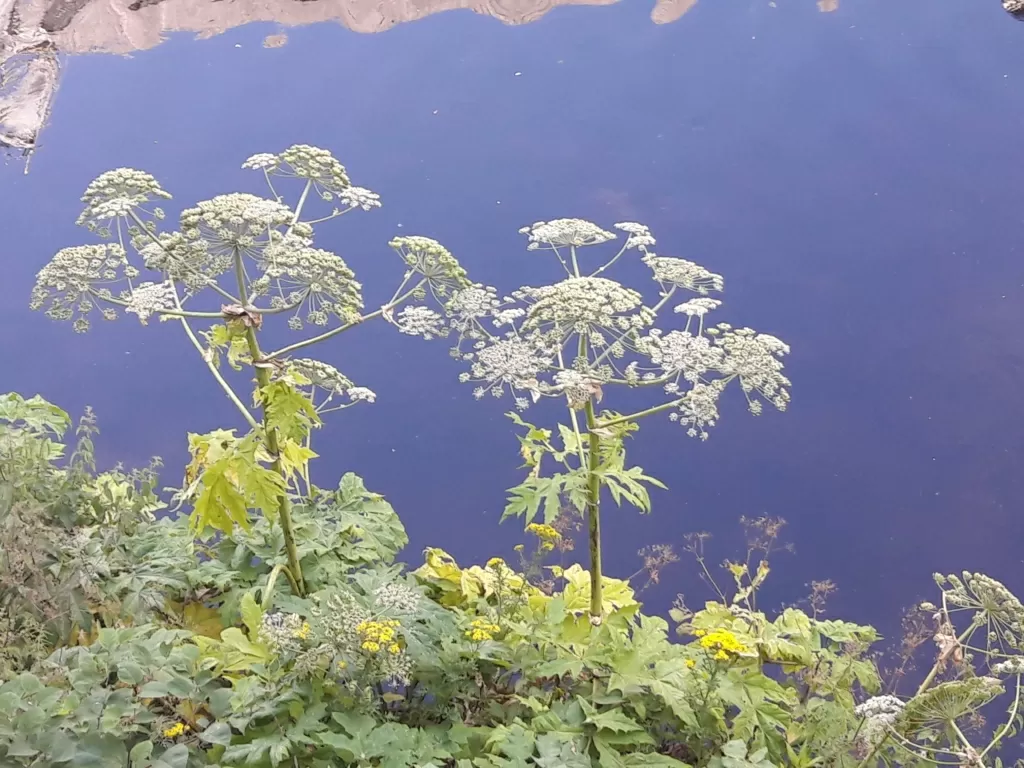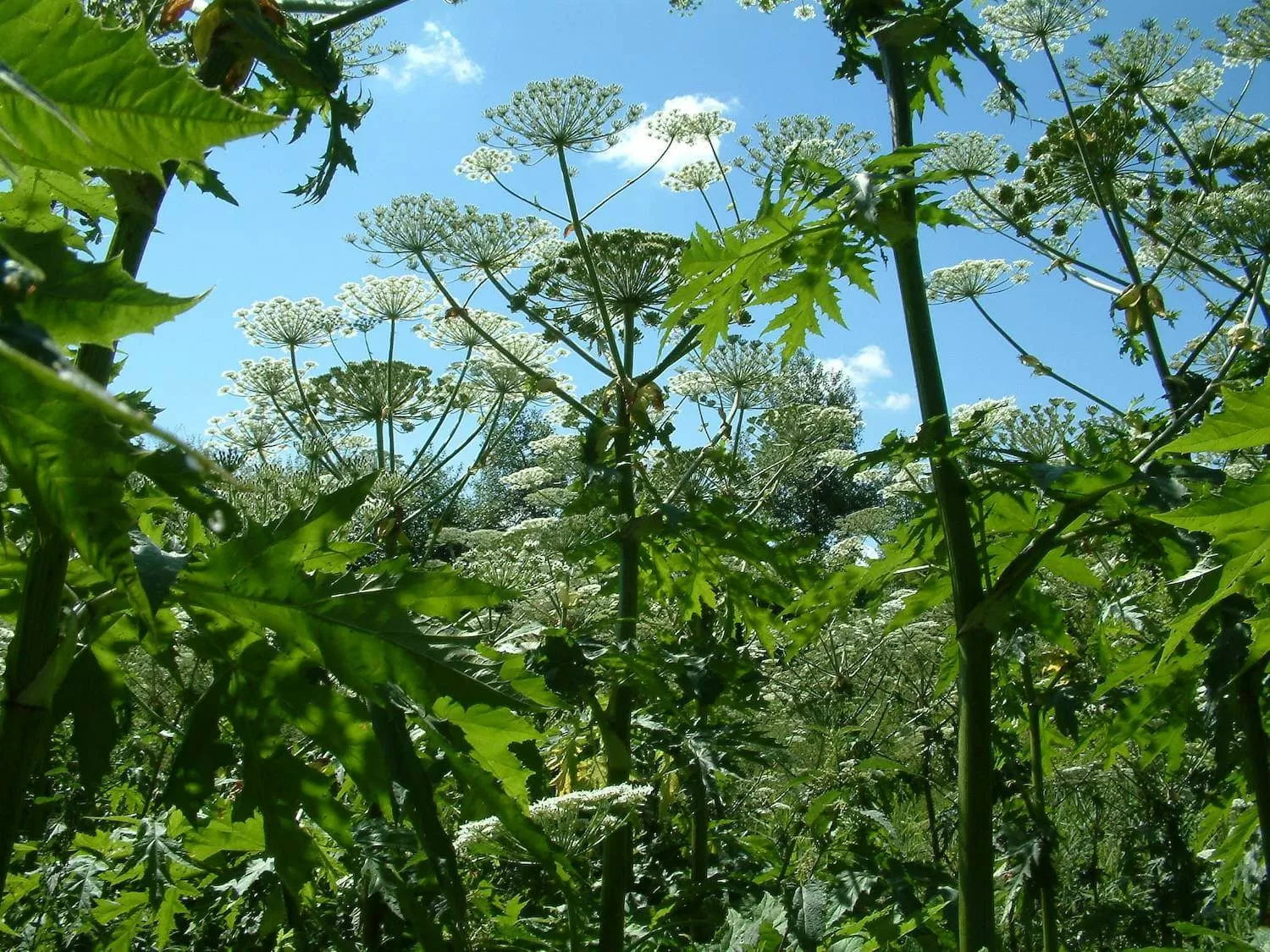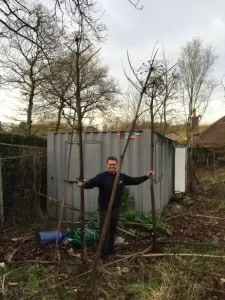Like Japanese knotweed, Giant hogweed is a highly invasive plant. When fully grown, it may look impressive to the eye. However, this species is dangerous and you should treat it as soon as it is found.

Giant hogweed is closely related to cow-parsley and looks rather similar. Hogweed is a tall plant that has thick, bristly stems that can also be purple-blotched. The flowers are white, come in flat- topped clusters and can grow up to 2ft across. Furthermore, the whole plant can reach heights of 3.5 meters.
In the first year of growing, the weed will form jagged leaves before starting to flower in the second year.
Giant hogweed sap contains a highly toxic chemical known as ‘photosensitising furanocoumarins’ which is light activated. When coming into contact with skin, it can cause third-degree burns and leave scarring. Of which, can last up to 6 years.
As well as this, it is invasive as one plant can produce up to 80,000 seedlings. Which, can disperse and create new hogweed plants. The weed is also known to change the chemical balance of the soil that it grows in. Making it, inhospitable for other plants in the area.


This species is found in gardens, allotments and woodlands between spring and autumn but is usually treated in the summer. We consider Giant hogweed as controlled waste. This means that when you take it off site, you can only dispose of it in licensed landfill sites.
In summary, if you think you have Giant hogweed on your property then please get in touch with us!
Other Articles We Think You Might Like
What is Common Ragwort?
What Can Be Mistaken For Japanese Knotweed?
Top 5 invasive weeds in the UK
For more articles like this, visit our news page.
